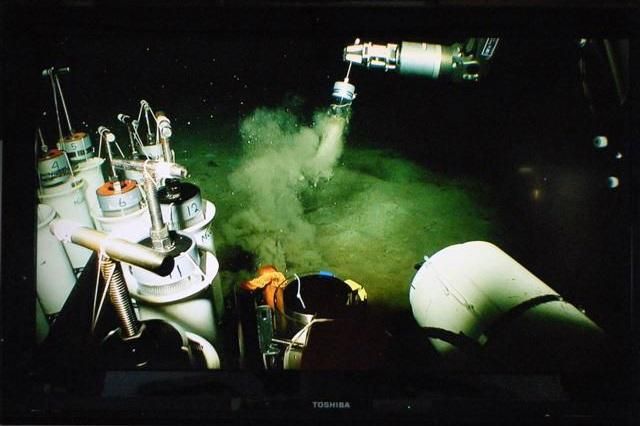
More than 2,000 shipwrecks at rest thousands of leagues beneath the Gulf of Mexico serve as an artificial reef for marine life and hold 500 years of maritime history deep within their hulls. But historic preservation laws couldn't protect them from the Deepwater Horizon oil rig explosion 41 miles off Louisiana's coast six years ago this spring. Once the notorious wellhead came uncapped, it unleashed an estimated 4.2 million barrels of oil into the Gulf. About 30 percent of that ended up in areas of the deep sea that contain shipwrecks.
On February 22, during the Ocean Sciences Meeting in New Orleans, scientists presented new findings from a study investigating how the BP event might have affected these sea regions. The project, led by the Bureau of Ocean Energy Management, was the first of its kind to explore the long-term impacts of an oil spill on shipwrecks and the microbial communities that exist within them and make them habitable for marine life such as coral, crabs and fish. The researchers found that these bacteria were more abundant and diverse following the oil spill and that microbes exposed to oil were quicker to corrode metal.
The study was transformative for co-lead author Leila Hamdan, a microbial ecologist at George Mason University in Manassas, Virginia. "I will never forget the sensation I had when the underwater robot flew across the dark seafloor, an already beautifully muddy landscape, and suddenly I could see a shipwreck, with all of its history and ecology before my eyes," she says, recalling the project's first expedition in 2014. "It really changed me as a scientist.... In a single instant, I knew that there was more to the seafloor than I ever really considered."
When a shipwreck occurs, the first organisms on the scene are the tiniest of marine life—microbes. The microbes are also the first to respond to disturbances such as exposure to hydrocarbons or oil. Sometimes microbes form protective biofilms on exposed metal areas of a ship, but other times they corrode the metal. Hamden's research team compared the makeup of microbial communities near shipwrecks before and after the 2010 oil spill.
The team evaluated eight shipwrecks, extending up to 7,500 feet deep into the Gulf. Two wooden-hulled sailing ships from the 19th century and four World War II-era steel-hulled vessels were among the ships studied. The researchers placed carbon steel discs in tanks on the ocean floor near these shipwreck sites, some of which were affected by the oil spill and others that were not. To measure corrosion and microbial change, the team treated the tanks with crude oil, dispersant or both, or there was no treatment at all. Discs and seawater samples were collected biweekly to analyze bacterial makeup.
The samples revealed that microbial communities were diverse, differing among sites. Those tainted by the oil spill were found to have more bacteria than the control sites had. In general, bacterial composition was determined primarily by proximity to the spill and secondarily by hull material at all sites. Biodiversity was found to be highest adjacent to two steel-hulled wrecks. The iron-oxidizing Mariprofundus genus of bacteria were particularly common at the steel-hulled sites, indicating this bacteria preferred steel to wood.
In addition, using 3-D laser and sonar technology to obtain high-resolution images of the sunken vessels, the team documented how well the shipwrecks are preserved. In one case, a World War II German U-boat that has been examined several times since its discovery in 2001 was found to be buried in more sediment than was observed before the spill, although the researchers are working to determine if this was the result of a natural process or related to the oil spill.
The team plans to repeatedly scan the shipwrecks to record how they change over time. It will also monitor changes to the microbial communities to evaluate the long-term effects an oil spill can have on deep-sea areas.
"The microorganisms in these deep-water habitats, where these artificial reefs are present, make life habitable, make it luxurious, in a place that is cold and dark and permanently separated from light," Hamden says. "If we are performing activities in the ocean that potentially change these extremely important communities, we should know about that."
Uncommon Knowledge
Newsweek is committed to challenging conventional wisdom and finding connections in the search for common ground.
Newsweek is committed to challenging conventional wisdom and finding connections in the search for common ground.
About the writer
To read how Newsweek uses AI as a newsroom tool, Click here.








